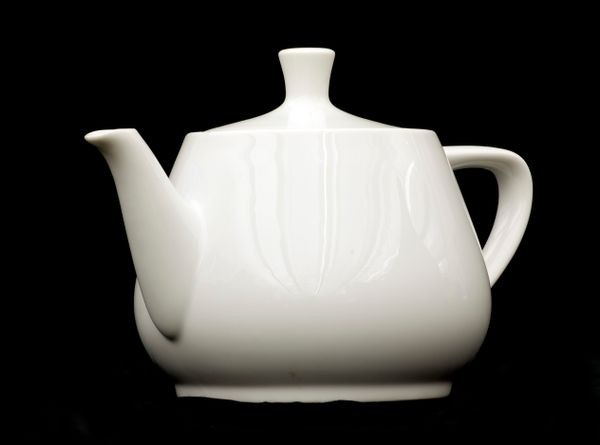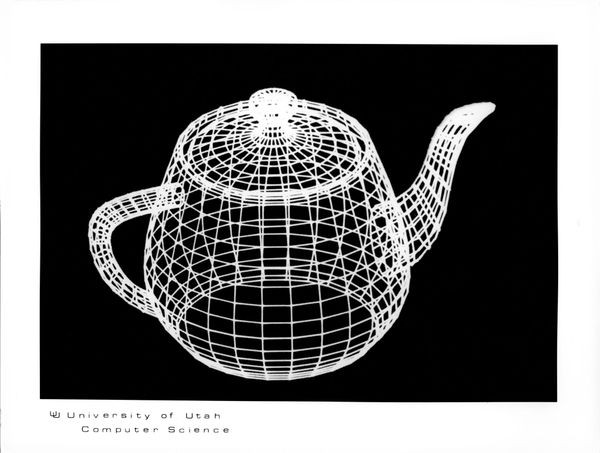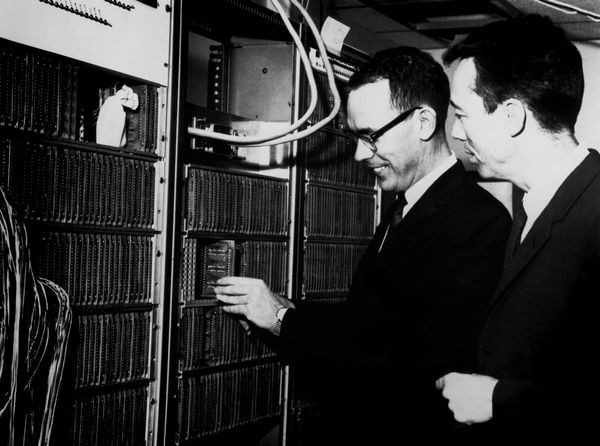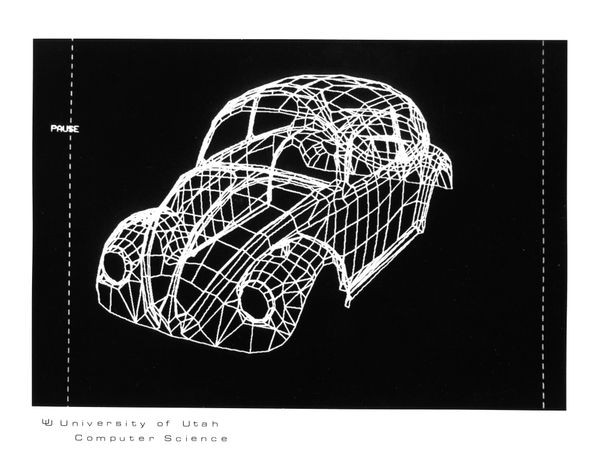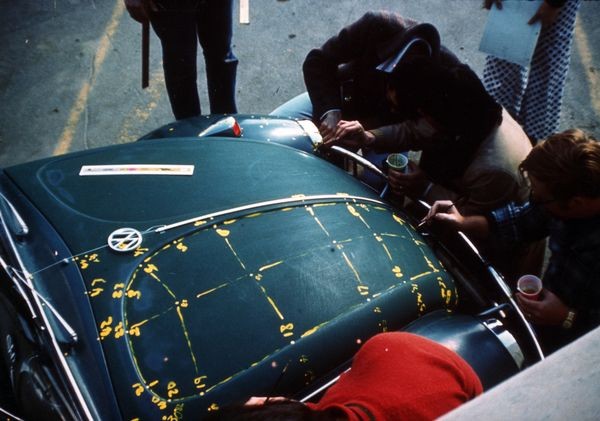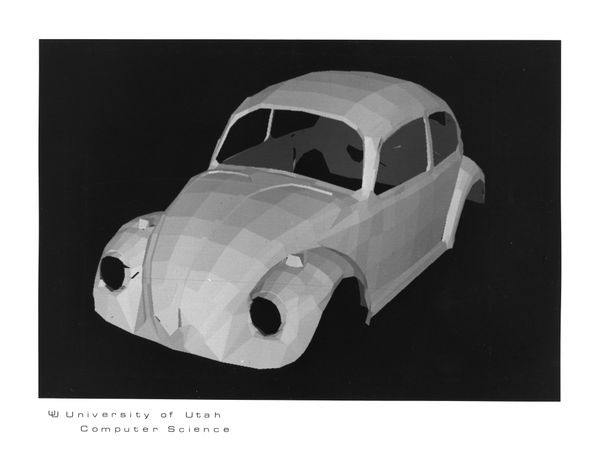The Utah Teapot
Martin Newell’s drawing of the Utah Teapot
Newell created the original three-dimensional coordinates for the teapot by hand using graph paper.
The Utah Teapot
Computers manipulate data. So, how do you get them to generate images? By representing images as data.
Martin Newell at the University of Utah used a teapot as a reference model in 1975 to create a dataset of mathematical coordinates. From that he generated a 3D “wire frame” defining the teapot’s shape, adding a surface “skin.”
For 20 years, programmers used Newell’s teapot as a starting point, exploring techniques of light, shade, and color to add depth and realism.
The Utah Teapot
University of Utah computer graphics researcher Martin Newell bought this Melitta teapot — later famous as a computer graphics model — in a Utah department store.
View Artifact DetailWire-frame model of the Utah Teapot
University of Utah researchers created this simple representation of a complex three-dimensional object — a teapot — using the data set created by Martin Newell.
View Artifact DetailRenderman Walking Teapot
This walking teapot toy was a give-away promoting Pixar’s Renderman software for movie animation and digital effects. It was inspired by the Utah teapot, a popular study object for computer graphics researchers.
View Artifact DetailVisualizing the Possibilities
If you were interested in computer graphics in the 1960s, you probably kept an eye on Utah.
The Graphics Lab at the University of Utah Computer Science Department attracted many early, innovative pioneers. Faculty included Ivan Sutherland, fresh from virtual reality experiments at Harvard, who volunteered his Volkswagen Beetle to be digitized. Students smothered it in a grid of tape to take measurements.
The Lab’s research brought advances in art, computer animation, and graphical user interfaces. Faculty and alumni founded influential firms such as Silicon Graphics, Evans & Sutherland, Adobe, and Pixar.
David Evans and Ivan Sutherland
These two professors in the University of Utah Computer Science department founded Evans & Sutherland in 1968, first located in abandoned barracks on the university grounds. Building military flight simulators was a major part of their business.
View Artifact DetailWireframe model of Sutherland’s Volkswagen
Wireframe models, which use lines to separate areas of mathematically continuous smooth surfaces, are fast and relatively easy to calculate.
View Artifact DetailMapping Sutherland’s Volkswagen
University of Utah students map Professor Ivan Sutherland’s Volkswagen car as a reference model for their graphics experiments.
View Artifact DetailRendering of Sutherland’s Volkswagen
In this primitive rendering, polygons between the wire frame edges are uniformly shaded according to the amount of reflected light in each particular area.
View Artifact Detail
